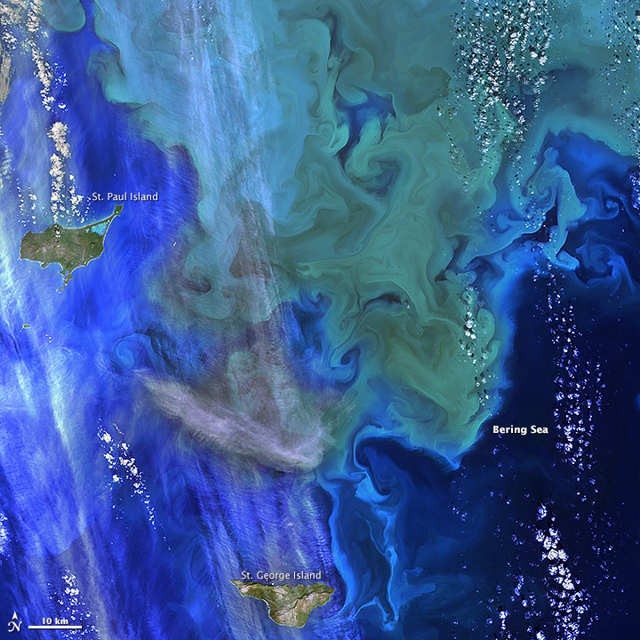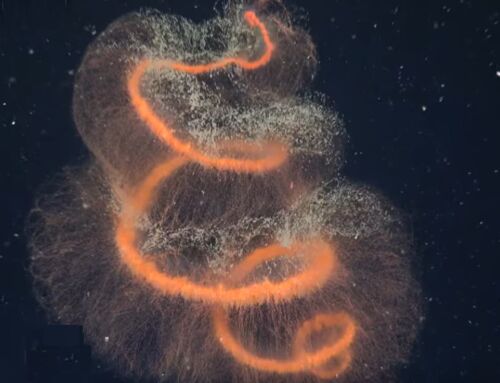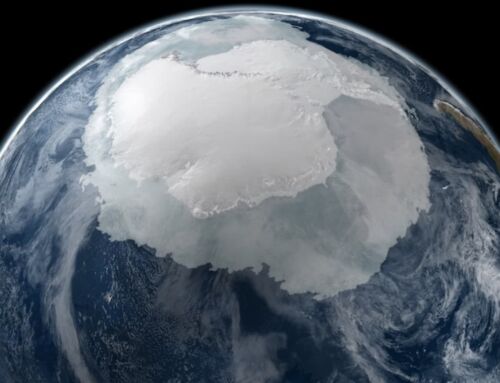An astonishing view of a phytoplankton bloom near Alaska’s Pribilof Islands, taken by the Operational Land Imager (OLI) on Landsat 8.
The Pribilof islands are surrounded by nutrient-rich waters in the Bering Sea. The milky green and light blue shading of the water indicates the presence of vast populations of microscopic phytoplankton—mostly coccolithophores, which have chalky calcite scales. Such phytoplankton form the foundation of a tremendously productive habitat for fish and birds.
Blooms in the Bering Sea increase significantly in springtime, after winter ice cover retreats and nutrients and freshened water are abundant near the ocean surface. Phytoplankton populations plummet in summertime as the water warms, surface nutrients are depleted by blooms, and the plant-like organisms are depleted by grazing fish, zooplankton, and other marine life. By autumn, storms can stir nutrients back to the surface and cooler waters make better bloom conditions.
The complicated interaction and feedback between water conditions, predators, and plankton populations was the subject of a recent paper by Mike Behrenfeld, a phytoplankton ecologist at Oregon State University. He notes that most discussions of blooms center on the physical conditions that initiate blooms. But the “dance of the plankton” is more complicated and it may involve ocean grazers—predators of phytoplankton—and other marine disturbances a bit more than previously suspected.
NASA Earth Observatory images by Jesse Allen and Norman Kuring, using Landsat 8 data from the U.S. Geological Survey. Caption by Kasha Patel and Mike Carlowicz.
Read more at earthobservatory







Leave A Comment